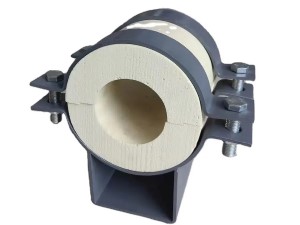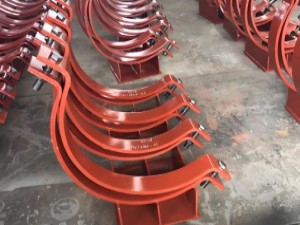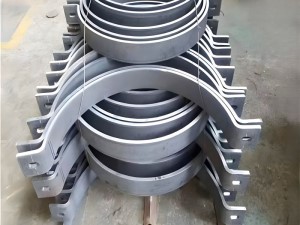Butt welds are welds where two pieces of metal to be joined are in the same plane.[1] These types of welds require only some kind of preparation and are used with thin sheet metals that can be welded with a single pass.[2] Common issues that can weaken a butt weld are the entrapment of slag, excessive porosity, or cracking. For strong welds, the goal is to use the least amount of welding material possible. Butt welds are prevalent in automated welding processes, such as submerged-arc welding, due to their relative ease of preparation.[3] When metals are welded without human guidance, there is no operator to make adjustments for non-ideal joint preparation. Because of this necessity, butt welds can be utilized for their simplistic design to be fed through automated welding machines efficiently.
Butt joint geometries
There are many types of butt welds, but all fall within one of these categories: single welded butt joints, double welded butt joint, and open or closed butt joints. A single welded butt joint is the name for a joint that has only been welded from one side. A double welded butt joint is created when the weld has been welded from both sides. With double welding, the depths of each weld can vary slightly. A closed weld is a type of joint in which the two pieces that will be joined are touching during the welding process. An open weld is the joint type where the two pieces have a small gap in between them during the welding process.
Square butt joints[edit]
The square-groove is a butt welding joint with the two pieces being flat and parallel to each other. This joint is simple to prepare, economical to use, and provides satisfactory strength, but is limited by joint thickness. The closed square butt weld is a type of square-groove joint with no spacing in between the pieces. This joint type is common with gas and arc welding.
For thicker joints, the edge of each member of the joint must be prepared to a particular geometry to provide accessibility for welding and to ensure the desired weld soundness and strength. The opening or gap at the root of the joint and the included angle of the groove should be selected to require the least weld metal necessary to give needed access and meet strength requirements.
V-joints[edit]
Single butt welds are similar to a bevel joint, but instead of only one side having the beveled edge, both sides of the weld joint are beveled. In thick metals, and when welding can be performed from both sides of the work piece, a double-V joint is used. When welding thicker metals, a double-V joint requires less filler material because there are two narrower V-joints compared to a wider single-V joint. Also the double-V joint helps compensate for warping forces. With a single-V joint, stress tends to warp the piece in one direction when the V-joint is filled, but with a double-V-joint, there are welds on both sides of the material, having opposing stresses, straightening the material.
J-joints[edit]
Single-J butt welds are when one piece of the weld is in the shape of a J that easily accepts filler material and the other piece is square. A J-groove is formed either with special cutting machinery or by grinding the joint edge into the form of a J. Although a J-groove is more difficult and costly to prepare than a V-groove, a single J-groove on metal between a half an inch and three quarters of an inch thick provides a stronger weld that requires less filler material. Double-J butt welds have one piece that has a J shape from both directions and the other piece is square.
U-joints[edit]
Single-U butt welds are welds that have both edges of the weld surface shaped like a J, but once they come together, they form a U. Double-U joints have a U formation on both the top and bottom of the prepared joint. U-joints are the most expensive edge to prepare and weld. They are usually used on thick base metals where a V-groove would be at such an extreme angle, that it would cost too much to fill.
Thin sheet metals are often flanged to produce edge-flange or corner-flange welds. These welds are typically made without the addition of filler metal because the flange melts and provides all the filler needed. Pipes and tubing can be made from rolling and welding together strips, sheets, or plates of material.[4]
Flare-groove joints are used for welding metals that, because of their shape, form a convenient groove for welding, such as a pipe against a flat surface.
The Tee Butt Weld is formed when two bars or sheets are joined perpendicular to each other in the form of a T shape. This weld is made from the resistance butt welding process.
Selection of the right weld joint depends on the thickness and process used. The square welds are the most economical for pieces thinner than 3/8”, because they don’t require the edge to be prepared.[5] Double-groove welds are the most economical for thicker pieces because they require less weld material and time. The use of fusion welding is common for closed single-bevel, closed single J, open single J, and closed double J butt joints. The use of gas and arc welding is ideal for double-bevel, closed double-bevel, open double-bevel, single-bevel, and open single-bevel butt welds.





